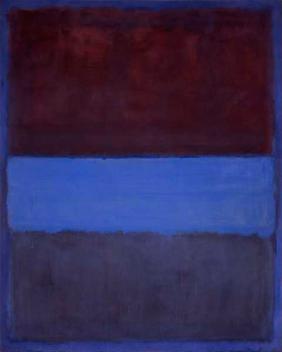Abstract expressionism was meant for painters who filled their canvases with colour and abstract forms and painters who attacked their canvases with a vigorous gestural expressionism. In simpler terms, abstract expressionism was the term used for any new form of abstract art. Abstract Expressionism became one of the most accepted term for a group of artists who didn't hold much in common. They were all completely committed to an expressive art with a lot of emotion and all accepted universal themes. Most of the artists were shaped by Surrealism, a movement that they translated into a new style fitted to the post-war mood of anxiety and trauma. A lot of the artists were easily influenced by the era's politics, they then came to value an art grounded in personal experience. They often adopted the posture of outspoken avant-gardists protesting from the margins. The artists of this time matured at a time when America suffered economically and felt culturally isolated.
The Abstract Expressionists were later welcomed for being "emphatically American in spirit, monumental in scale, romantic in mood and expressive of a rugged individual freedom."
Artists monumentally characterised with abstract expressionism were artists such as Jackson Pollock, Mark Rothko and Willem de Kooning.
Jackson Pollock
Jackson Pollock was an influential American painter of his time. He was also the leading force behind the abstract expressionist movement in the art world. During his lifetime, Pollock enjoyed his considerable fame and notoriety. Jackson's greatness lies in developing one of the most radical abstract styles in the history of modern art! Detaching line from colour redefining the categories of drawing and painting and finding new means to describe pictorial space.
Pollock among other Abstract Expressionists anxiously aware of human irrationality and vulnerability expressed their concerns in an abstract art. By mid 1940's, Pollock introduced his famous 'drip paintings'. Which represent one of the most original bodies of work of the century and forever altered the course of art. At time the new art forms could suggest a life force in nature and others could evoke mans entrapment - body and mind.
Pollock created his works by laying canvases on the floor or laid against a wall rather than being fixed to an easel. From there, Pollock used a style where he would allow the paint to drip the paint can. Against instead of using the traditional method of paint brush. He would add depth to the images using knifes, trowels or even sticks. This form of painting had similar ties to the surreal movement, in that it had direct retaliation to the artists emotions, expression and mood. Pollock had a volatile personality and struggled with alcoholism for most of his life. I think that is why his paintings although dripped on the canvas were so aggress and emotive.
"The painting has a life of its own. I try to let it come through" - Jackson Pollock
Rothko
Throughout Rothko's life acclaim never seemed to sooth his embattled spirit, he came to be known as a abrasive and combative character - much life Pollock. He was given an award by the Guggenheim Foundation but refused it as a protest against the idea that art should be competitive. He was always very confident in his beliefs "I am not an abstractionist" he once stated. He distanced himself from classification of his work as non objective colour filled paintings. Instead he stressed that his paintings were based solely on human emotion of tragedy ecstasy and doom. He also denied being a colourist - despite the fact colour was the primary importance of his work.
His painting in the 1930's was influenced by Expressionism. However by 1940 he was influenced by Surrealism, so he abandoned expressionism for more abstract imagery. Rothko came to see mankind as locked in a mythic struggle with his free will and nature. In 1939 he briefly stopped painting altogether to read up on mythology and philosophy. It is likely Rothko was undiagnosed with bipolar disorder.
His paintings were meant to entirely envelope the viewer. Rothko radically reduced the number of forms in his pictures and grew them such that they filled out the canvas. Painting consumed his life. Although he did not receive the attention he felt his works deserved in his own lifetime, his fame has increased dramatically in the years following his death.

No comments:
Post a Comment